15 True Hotel Stories That Are Too Surreal to Be Real

Scientists were looking at a list of gas clouds when they saw something strange — five groups of blue stars that are not quite a galaxy and not a known type of star cluster either. These groups of stars are called “blue blobs” and they’re located in the Virgo galaxy cluster.
Now, the big question is — how did these blue blobs form if they don’t have any nearby parent galaxy where they could form? Scientists realized there are some heavy metals present in these blobs.
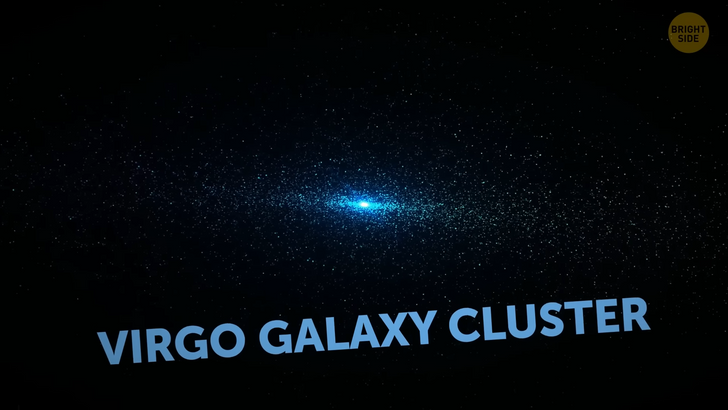
Generally, when stars are born, they create heavy elements called metals. These metals are essential building blocks for new stars. In big galaxies, many stars form over time, and as a result, more metals get created too. These heavy metals in the blue blobs were a clue that the stars in these blobs were formed from gas that was stripped from a larger galaxy.
Think of it as a piñata — the candy is the gas and the piñata is this bigger galaxy. The blue blobs are the leftover candy that was scattered around. Wow, didn’t expect to get hungry while talking about stars.
How did the gas get stripped away from the bigger galaxy anyway? There are two ways. When galaxies pass by each other, their gravitational attraction can cause gas to be pulled away from one galaxy and into the other. This is called tidal stripping, and it’s the first way these blobs can happen. It’s like when two magnets attract and pull metal objects toward each other.
Another way is ram pressure. This happens when a galaxy moves through a cluster of hot gas at a pretty high speed. The gas in the cluster can push against the gas in the galaxy, and force it out back, similar to a car pushing air out of the way as it drives. And you lose your hat in a strong wind!
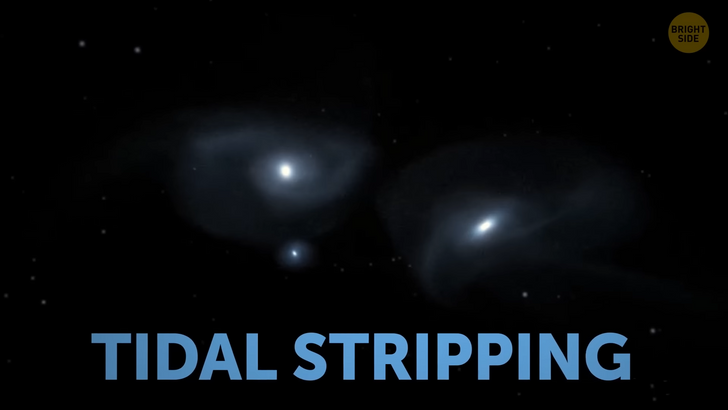
As time goes by, these stars in the blue blobs will keep on moving apart. Eventually, they will form smaller clusters.
Have you ever seen pictures of Earth taken from space? They’re amazing! But have you seen the one with two blue blobs of light?
The first blob of light you see here is a large lightning strike in the Gulf of Thailand. It’s rare to see lightning from space because of all the clouds, but this one was so huge it lit up the clouds around it like some kind of a brilliant ring! How cool is that?
The second blue blob of light is a bit different. We’re looking at the reflection of the Moon’s light on our home planet! The Moon actually reflects the light coming from the Sun onto the Earth. And when that light goes through the Earth’s atmosphere, it creates a big blue blob with a fuzzy outline. It’s like a shiny blue hat our planet is wearing!
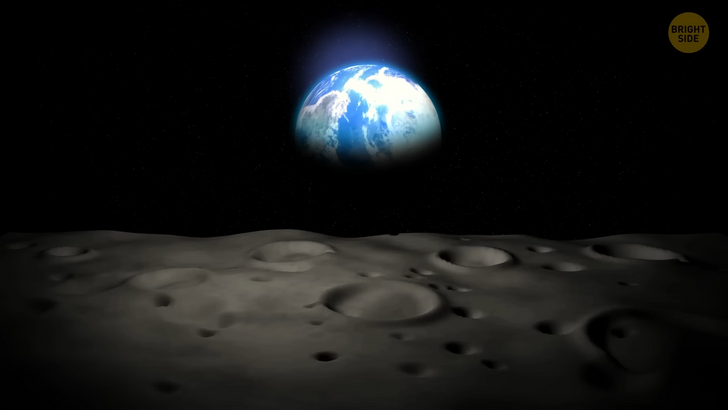
It’s similar to the reason why the sky is blue during the day. When sunlight enters Earth’s atmosphere, gasses and particles in the air scatter it in all directions. Blue light has the shortest and smallest waves, so it gets scattered the most. And that’s why we get to enjoy a beautiful view of a clear blue sky! The same thing actually happens to the light coming from the Moon when it reflects off the Earth and goes through the atmosphere. The blue light waves get scattered the most, making the moon appear blue in the photo.
Speaking of unusual stars, there’s one in the Centaurus constellation called Lucy. It looks like a tiny white dwarf, but it’s actually very dense — there’s a mass of the entire Sun squeezed into an object only a third of the size of our home planet! That’s like stuffing a whole watermelon into a golf ball!
Lucy is also incredibly cool. Its core temperature is almost 12,000 F [11,912 F]. This may sound hot at first, but, for comparison, our Sun is about 27 million F. And the best part that makes Lucy, so special is the diamond at its heart! Its carbon core has crystallized into a massive diamond that’s 10 billion trillion carats in size. It’s hard to even imagine how big it is!
Scientists found out about this awesome diamond by listening to the star’s vibrations — which are like a star’s heartbeat. And after they discovered Lucy scientists found some other stars with crystallized cores and massive diamonds the size of Earth too. Our universe is like a giant jewelry store!
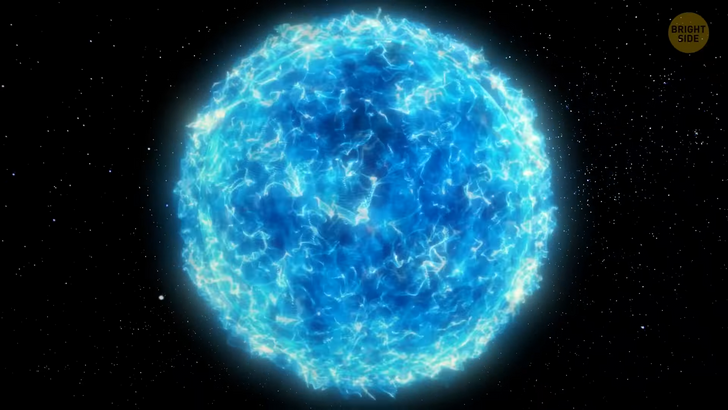
Most of the astronomers from the Northern Hemisphere are familiar with the star named Vega. First, it’s brighter than expected. But if you could take a look at it from a different angle, you’d see this star is actually squashed. It has a specific oblong shape because it rotates at a high rate. It spins once every 12.5 hours, which throws the material out around its equator. This material then cools and darkens, and forms a dark mysterious halo around Vega.
When stars reach the end of their lives, they often explode in a dazzling supernova, getting brighter and brighter before they finally fade away. But one supernova [iPFT14hls] decided not to obey the rules. It started to fade away, like most other stars, but then, when everyone expected it to be gone, it suddenly came back to life and brightened up again. And not just once — it kept fading and brightening at least five times in a row!
Scientists were so surprised to see this. When they measured the light from the supernova, they found it was evolving 10 times slower than other stars. It was aging way more slowly too — when it looked 60 days old, it was actually 600 days old! It could be even older because scientists had recorded another supernova in the same spot almost 70 years ago [1954].
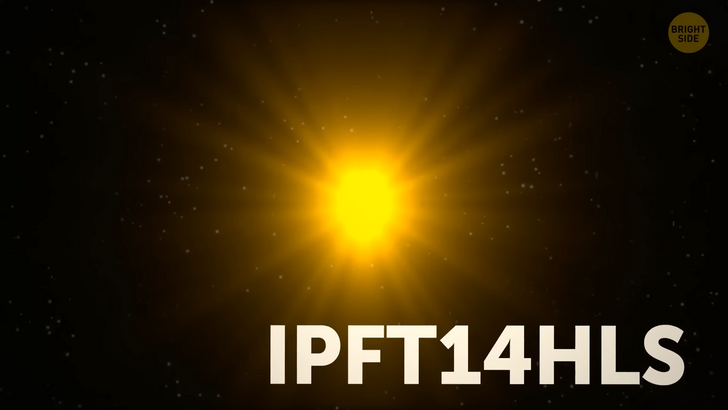
There are some theories as to how it could have happened. Maybe the supernova was bumping into some surrounding material and then making it glow. Or maybe it was a giant star that was shedding material all the time to prevent — or at least postpone — its own collapse.
At first, it may seem like you’re looking at a simple variable star here [MY Camelopardalis]. But when astronomers looked more closely, they realized it was a pair of stars. The two stars are moving around each other at really high speeds, and their atmospheres are starting to mix because they are so close.
People believe this example is the start of a union between two stars. In the end, the two celestial bodies, which already weigh 32 and 38 solar masses each, will join together to make a gigantic one with more than 60 solar masses. Scientists have thought for a long time that this is how super-big stars form, but they’ve never really seen it happen.
The universe is 13.8 billion years old. And from what we can see, one mysterious star [HD 140283] could be 14.4 billion years old. Hmm, something’s not right here. This star has all the chemical signs of a second-generation star, which is a star that formed from gas and dust after the first generation of stars exploded.
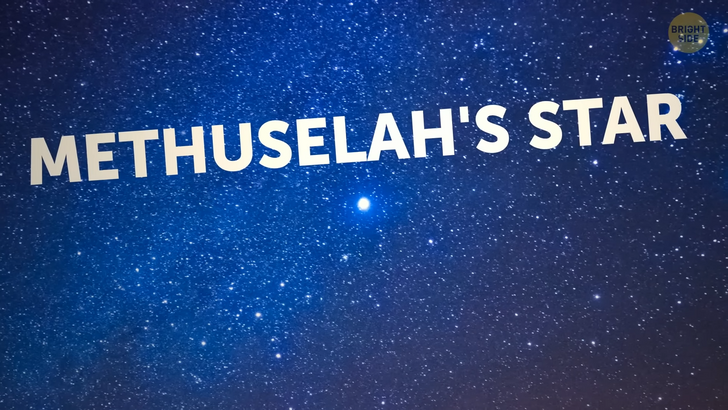
This star, sometimes called “Methuselah’s star”, is 190 light-years away. Its brightness, distance, and composition help us figure out how old it is — at least 13.2 billion years old, while the age of 14.4 billion years is probably put there as a potential range. Even if it’s younger than the Universe — or is it? — it’s still by far the oldest star near us. Let’s not forget the one with a tail either! It’s called Mira. Sometimes it’s bright, and other times it’s faint, making it a bit of a tricky one to spot in its constellation [Cetus].
Sometimes it’s one of the brightest stars up there, while other times it is one of the fainter ones in its constellation. It’s the system with two stars — a red giant and a white dwarf. The red giant used to be like our own Sun, but now, as it’s closer to its end, it’s shedding its outer layers into space.
And Mira has a comet-like tail too! As the red giant sheds its outer layers, it creates a stream of gas and dust that follows the stars as they move through space.











